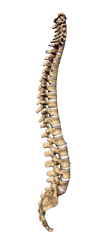 Lower back pain can be caused by a plethora of reasons, ranging from injury to aging and, in some cases, it can be debilitating, rendering a patient unable to work regularly or at all. But for some patients, finding a form of spinal manipulation, which is sometimes referred to as spinal manipulative therapy, that works for them can help them get back on their feet.
Lower back pain can be caused by a plethora of reasons, ranging from injury to aging and, in some cases, it can be debilitating, rendering a patient unable to work regularly or at all. But for some patients, finding a form of spinal manipulation, which is sometimes referred to as spinal manipulative therapy, that works for them can help them get back on their feet.
The National Center for Complementary and Alternative Medicine reports that spinal manipulation, when performed by a trained professional or executed in the method prescribed by a pain doctor, is safe and often effective, particularly in cases of chronic pain. And while it may not entirely replace drug therapy, spinal manipulation, exercise and stretching that is focused on the spinal cord can help mitigate pain. Some insurance plans even partially or fully cover this form of therpy, because it is cost-effective has relatively few side-effects.
Spinal manipulation is a therapeutic intervention that has roots in traditional medicine and has been used by various cultures, apparently for thousands of years. Hippocrates, the “father of medicine” used manipulative techniques, as did the ancient Egyptians and many other cultures. A modern re-emphasis on manipulative therapy occurred in the late 19th century in North America with the emergence of osteopathic and chiropractic medicine. Spinal manipulative therapy gained recognition by mainstream medicine during the 1960s.
 The effects of spinal manipulation have been shown to include:
The effects of spinal manipulation have been shown to include:
- Temporary relief of musculoskeletal pain
- Shortened time to recover from acute back pain
- Temporary increase in passive range of motion (ROM)
- Physiological effects on the central nervous system, probably at the segmental level
- Altered sensorimotor integration
- No alteration of the position of the sacroiliac joint
Common side effects of spinal manipulation are characterized as mild to moderate and may include: local discomfort, headache, tiredness, or radiating discomfort.
Source: www.komonews.com; April 29, 2013








